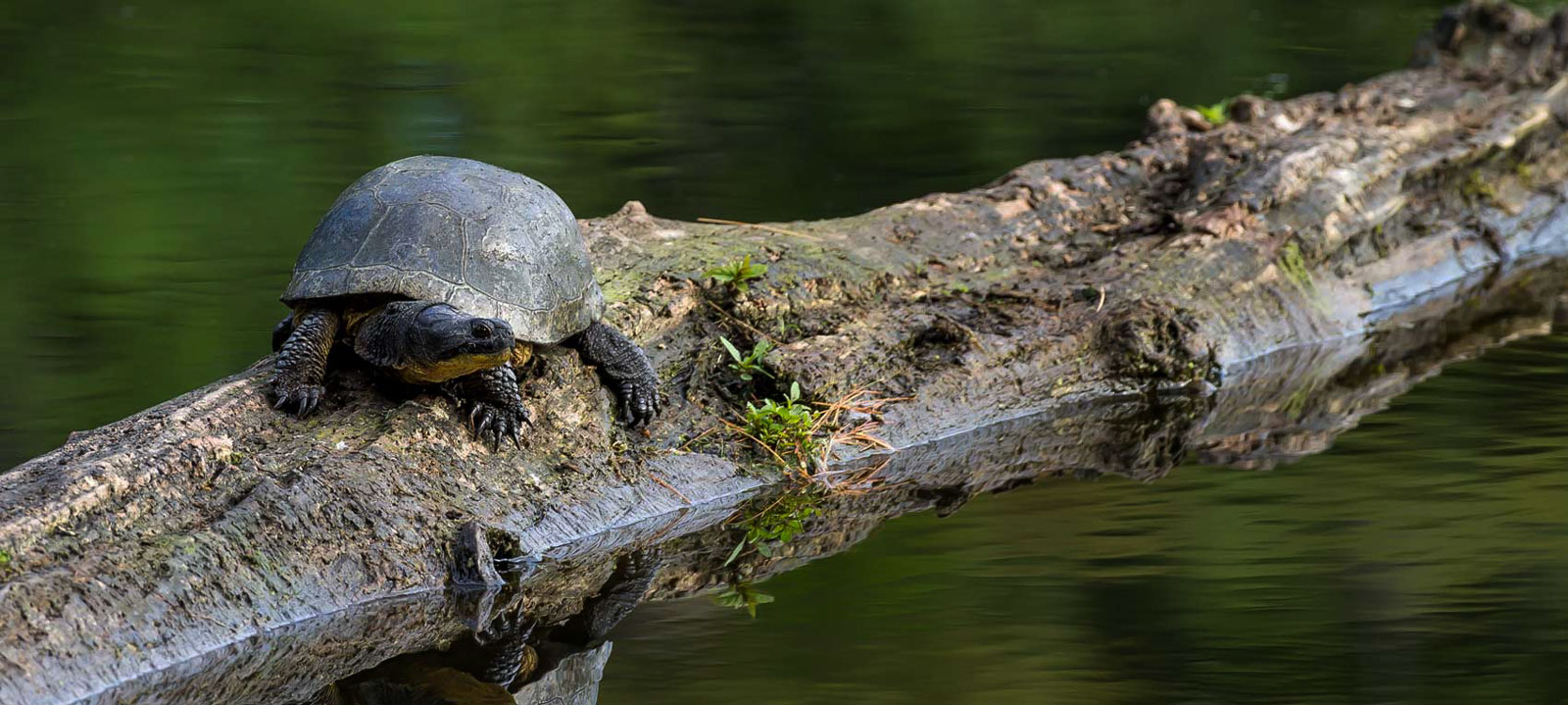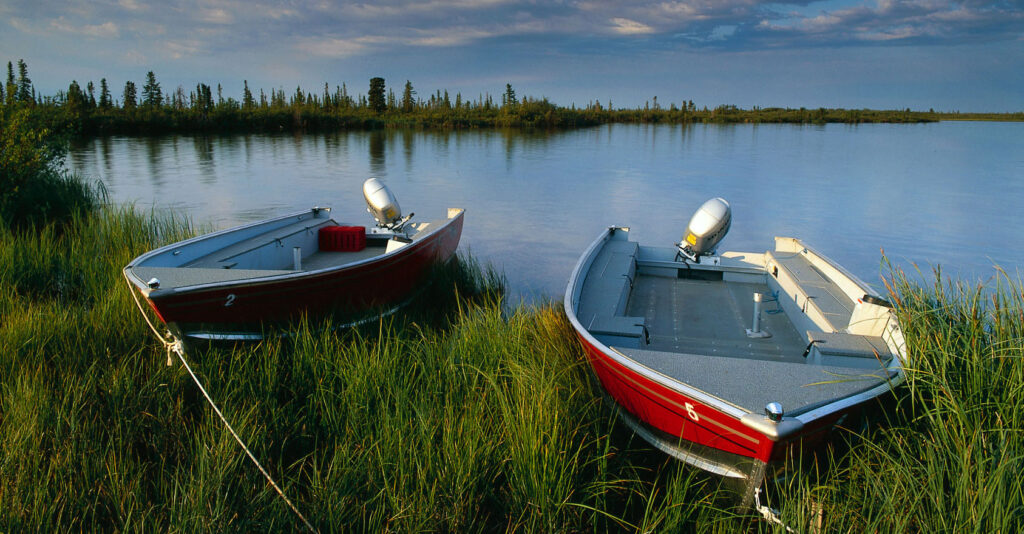Conservation takes time, commitment, investment, and collaboration. It should have started decades ago, but the next best time is RIGHT NOW. Canada has made progress, and we must not only maintain but also accelerate it.
In this third blog of our series unpacking “On the Path to 2030 – A Report Card on Progress to Protect Land and Ocean Across Canada,” we are focusing on the provinces that are falling behind. Consider this a firm wake-up call for the slackers of the conservation class. 🔍
The Kunming-Montreal Global Biodiversity Framework – an international agreement designed to halt and reverse biodiversity loss around the world – was signed by 196 countries, including Canada, with target 3 aiming to: “Conserve at least 30% of terrestrial and inland waters, and 30% of coastal and marine areas by 2030…through ecologically representative, well-connected and equitably governed systems of protected areas and other effective area-based conservation measures, recognizing Indigenous and traditional territories.” Essentially, a global plan to save nature.
This target is achievable in Canada. But only if every province and territory pulls its weight.

Ontario: Suspended from Conservation Class
Ontario earned an F in 2021 and nothing has changed. In fact, With the introduction of Bill 5, which would dismantle environmental protections and gut the Endangered Species Act, Ontario isn’t just failing; it is moving backwards and has been suspended. 😰
Ontario needs a major attitude adjustment. Economic growth does not have to come at the expense of nature. Stop bulldozing ecosystems and start showing leadership.
Ontario’s remedial summer school programming includes intensive lessons on habitat protection, reconciliation and more:
- Supporting Indigenous-led protection and respect for past agreements with Indigenous Nations;
- Respecting established guidelines for environmental protections;
- Returning authority and funding to Ontario’s conservation authorities to effectively manage watersheds;
- Committing to the 30×30 target and restoring 30% of all degraded ecosystems; and
- Creating new National Marine Conservation Areas in the Great Lakes.
Ontario, you are failing the planet and future generations. Smarten up! 🪶🐸🚣🏼📝🌊
Shifting grades across the country?
In the last couple of months, similar to the proposed deregulation policies from the Ontario and Alberta governments that would gut nature in those provinces, Bill 97 in Quebec has also been put forward.
These bills deeply jeopardize safeguards meant to protect the environment…protections that ensure species survive into the future, wetlands continue to purify our water, people continue to benefit from spending time in parks, and nature has the best chance to recover and thrive.
Stay tuned for the fourth (and final) blog post of this series, where we will explore these and other recent changes (good and bad) across Canada that will affect nature over the next years.
Photo: Gros Morne, Newfoundland by Jim Cornish
Newfoundland and Labrador: Good Intentions, Weak Follow-Through
Newfoundland and Labrador love making plans but need to get better at following through. With only 7% of nature in the province protected, there’s still a lot of ground (and ocean!) to cover. 🌊🌱
Moving from an F to a D- since 2021, Newfoundland and Labrador has shown some improvement but to make it to the honours list of conservation, they have a long way to go.
🚣♂️NL must go beyond vague commitments and demonstrate measurable action on marine and terrestrial protections, including:
- Supporting First Nations and local communities in the development of the South Coast Fjords NMCA;
- Committing to community engagement;
- Engaging effectively with Indigenous leadership; and
- Providing support for Indigenous-led conservation efforts.
With more effort, Newfoundland and Labrador can go from slowly “making plans” to actually getting things done.
Let’s see some stronger results moving forward!🤝🏽
Alberta: In Conservation Detention (But not Hopeless)
Alberta lacks focus and may be held back a grade if it doesn’t apply itself. 😬
Coal policies have been inconsistent, with bans being lifted due to industry pressure, partially reinstated due to public pressure, and then lifted again. The province lacks a commitment to protecting critical landscapes from coal mining and other environmental threats.
Alberta, it’s a slow climb out of “Conservation Detention” with a D- (up from an F), and you still have a mountain of work to do! Also, the Upper Smoky Sub-Regional Plan and the All-Seasons Resort Act, released after writing our report, leave us feeling very concerned about the lack of prioritization of protected areas or species at risk like caribou and native trout.🗻
To pass, you need to protect 30% of land and water (up from your current 15.5%), ban new coal mining, protect at-risk species, and look to Indigenous-led efforts.
Alberta, stop hitting snooze on those assignments – it’s time to pass the conservation course! Nature and your communities are depending on you.🌲🦌
Saskatchewan: Back of the Class, Missing Assignments
Saskatchewan has been sitting in the back row of conservation class, occasionally nodding along but not actually turning in any assignments. As such, they’ve slipped from a D to a D- since 2021. Reconciliation, grasslands, wetlands, species at risk, habitat protection — it’s all still waiting for meaningful attention. 👎
This year, Saskatchewan, let’s see you move up to the front of the class and focus on homework, including:
- Committing to more ambitious objectives to help Canada reach our 30×30 goal;
- Recognizing conservation work done by Indigenous Nations; and
- Protecting what remains of native Prairie grassland and wetland ecosystems through comprehensive conservation policies.
Make sure you keep working on these priorities to improve your grade! 🪺 🪶
Photo: Delta River, Saskatchewan by Garth Lenz
Why this Matters
Unfortunately, these provinces have left much to be desired. They may think conservation is someone else’s job, but they are wrong.
Provincial and territorial governments hold primary responsibility over land and freshwater resources. They have immense power and a moral obligation to lead conservation. Local action is about:
- Supporting economically vital species and sustainable industries;
- Helping communities mitigate floods and droughts;
- Providing future generations with access to nature;
- Ensuring food security
And, while the federal government leads on ocean regulation, provinces and territories still play a crucial role in coastal conservation. Collaboration is key, especially with Indigenous governments and communities, who are essential leaders in protecting land, water and sea.
CPAWS wants protections for nature that safeguard key areas from the impacts of harmful human industries, while keeping it in the hands of local people, and honouring the rights of First Nations, hunters, anglers and all Canadians.

The 30% protection target isn’t arbitrary. It’s what science tells us we need as a minimum to effectively protect biodiversity, mitigate climate change impacts, and continue to have access to nature now and into the future.
When nature thrives, so do we.💚
Banner photo: Endangered Blanding’s Turtle (Emydoidea blandi) by R. Taylor Images
Other stories you might be interested in:




